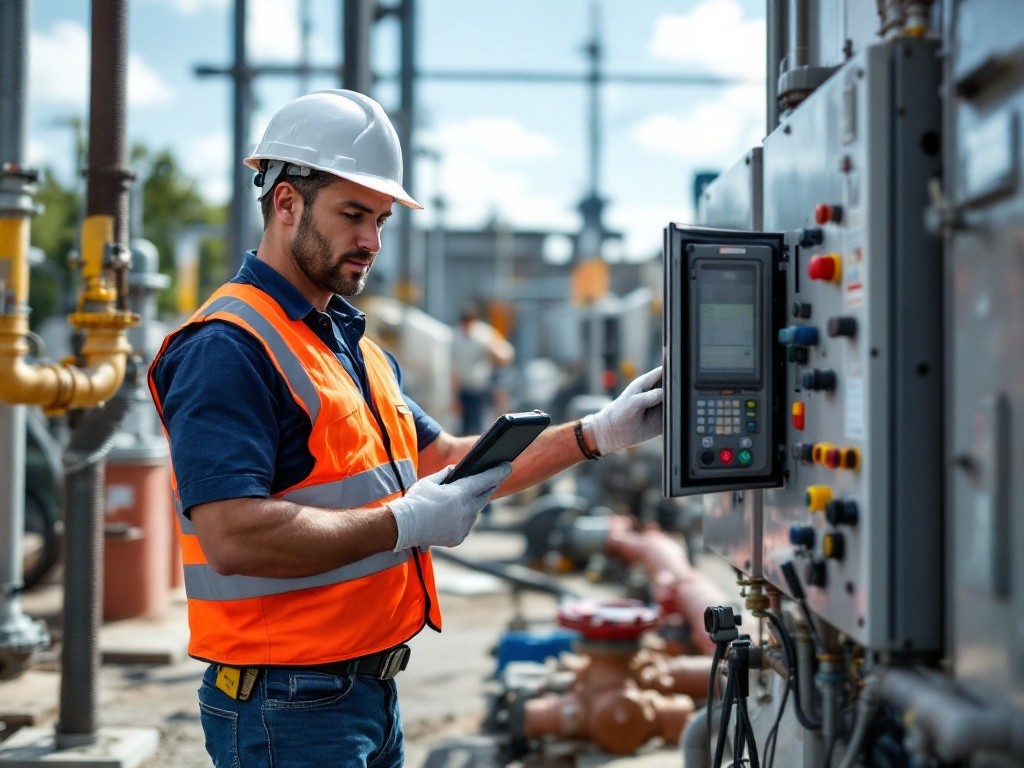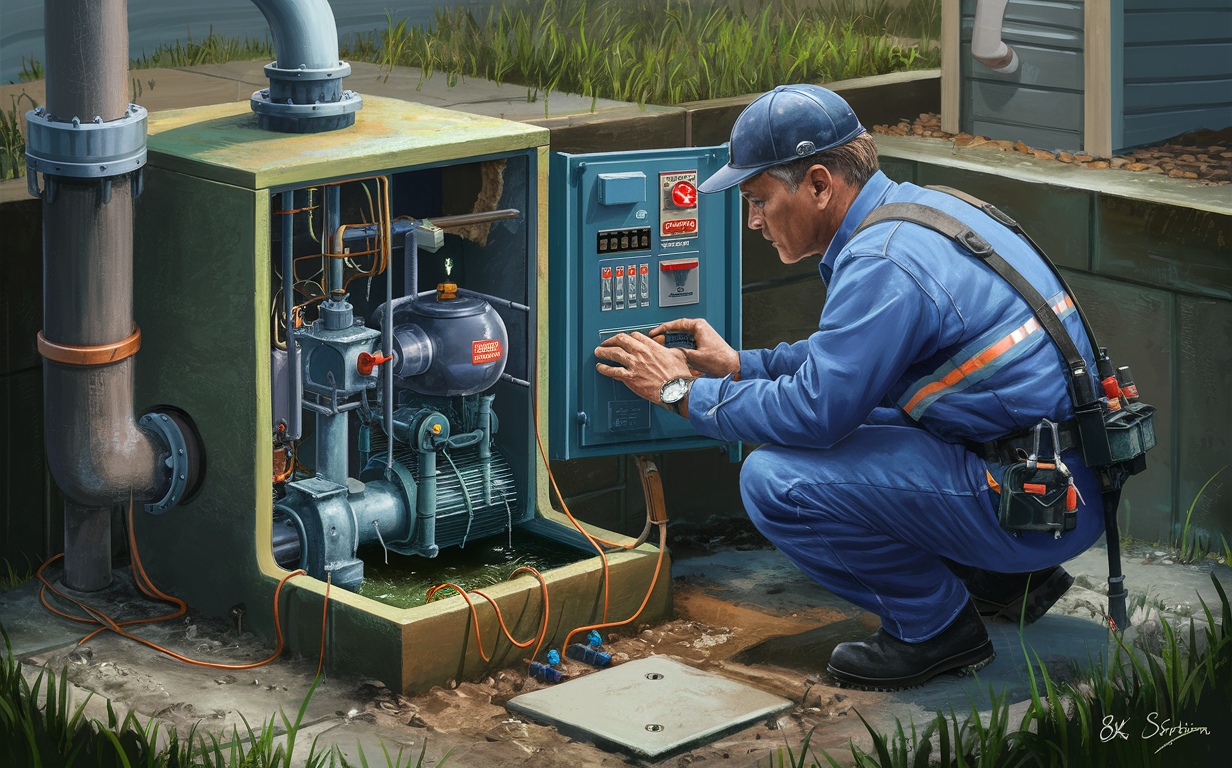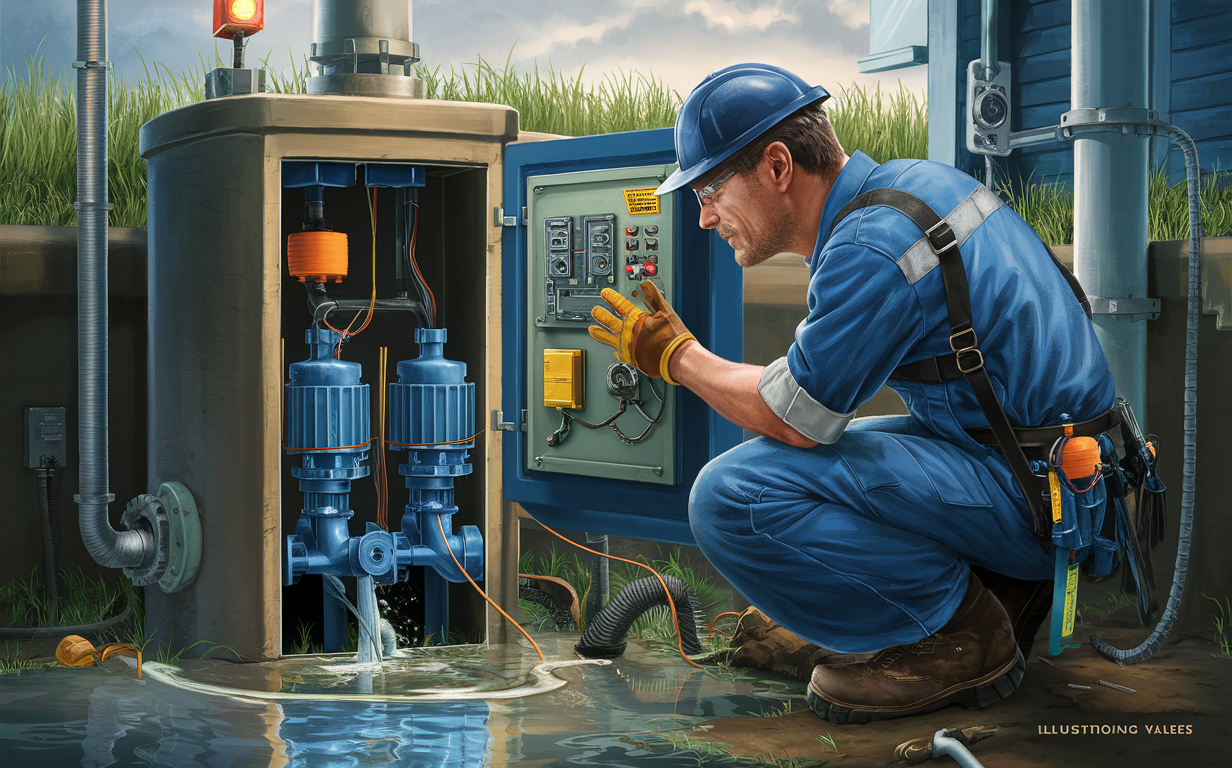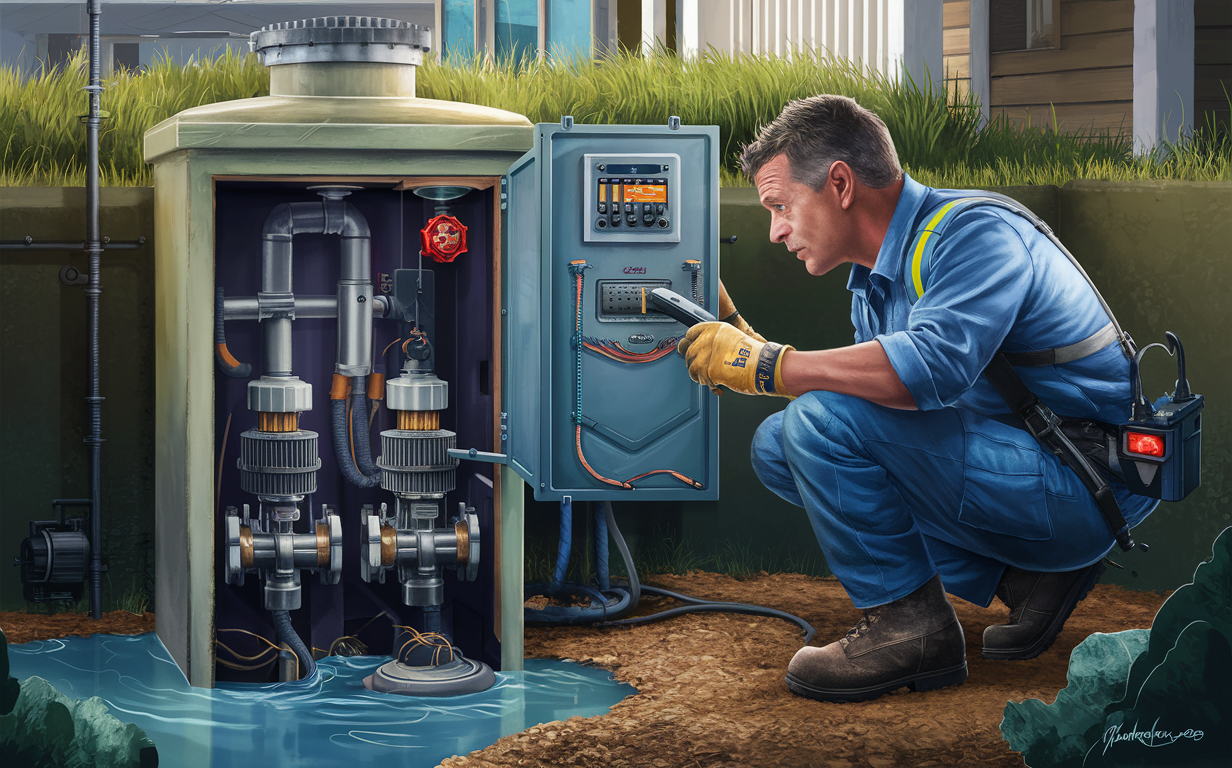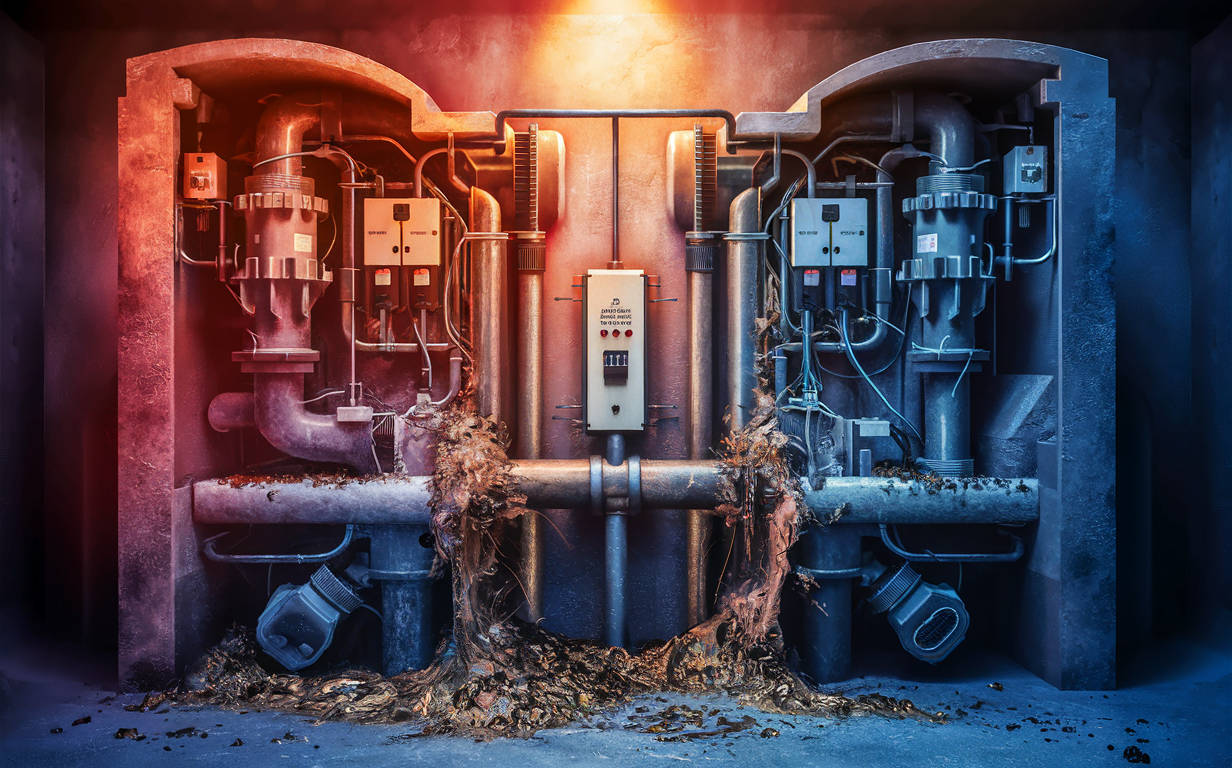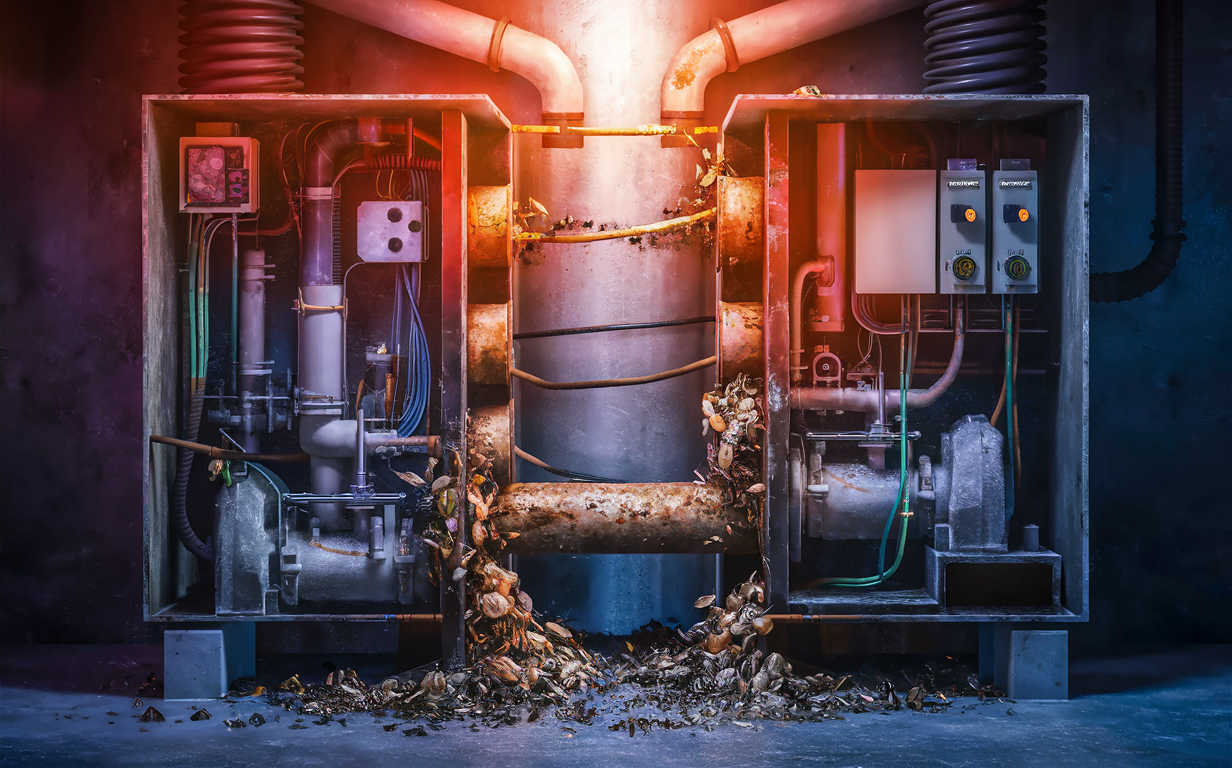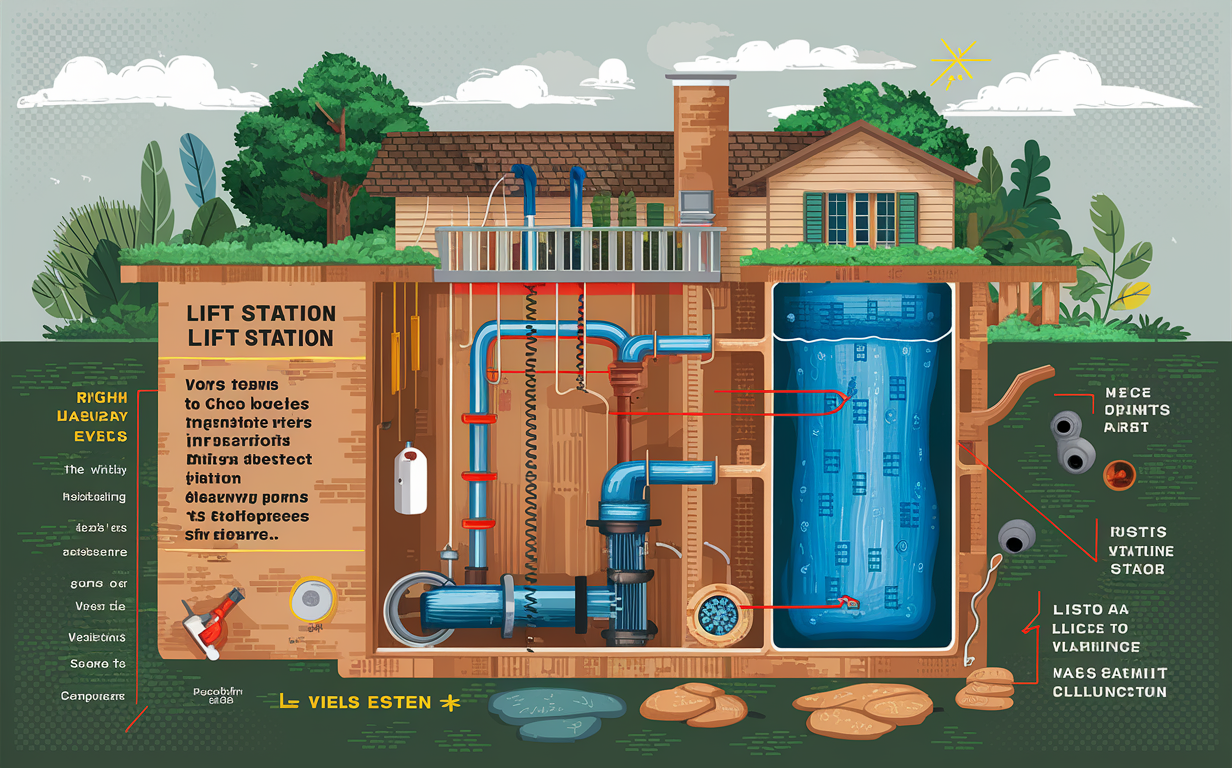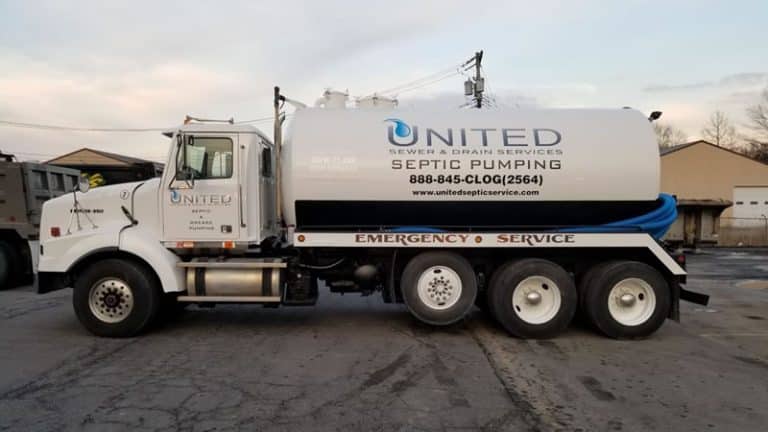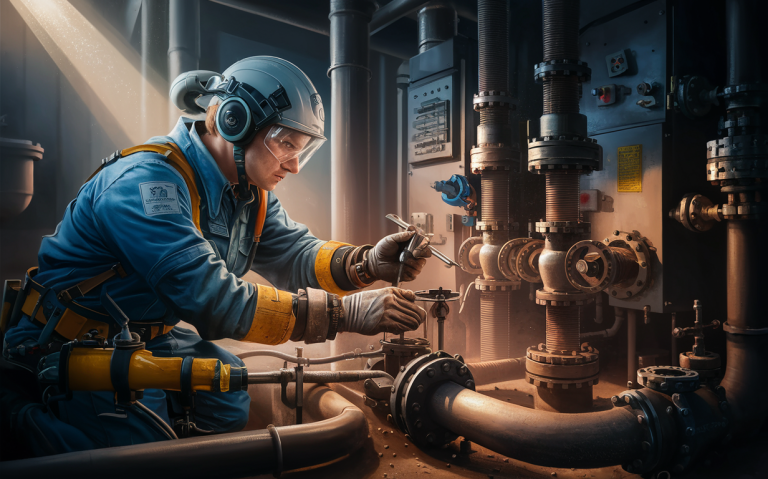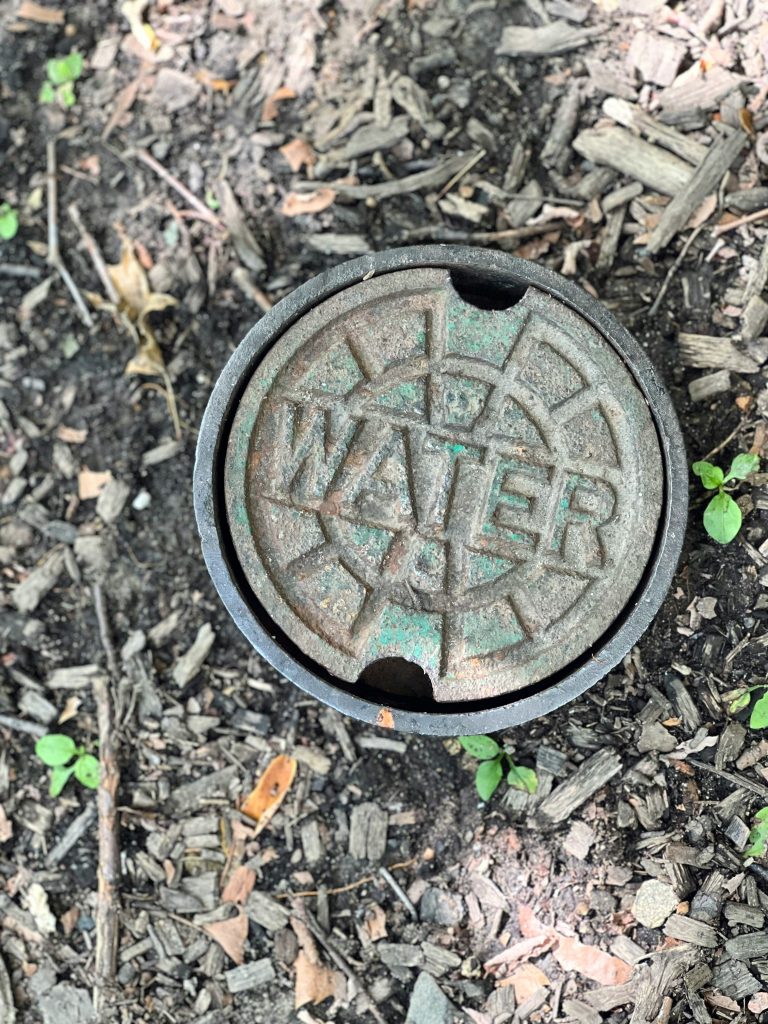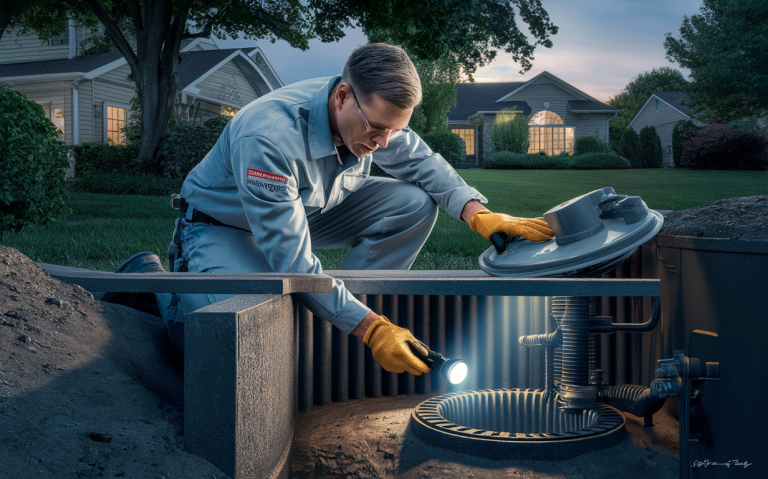Identifying Lift Station Malfunctions in Septic Systems: Key Signs & Solutions
Lift station malfunctions in septic systems can cause significant issues if not addressed promptly. This article will help you understand the common signs of problems, potential causes, and effective solutions to keep your septic system running smoothly.
Key Takeaway
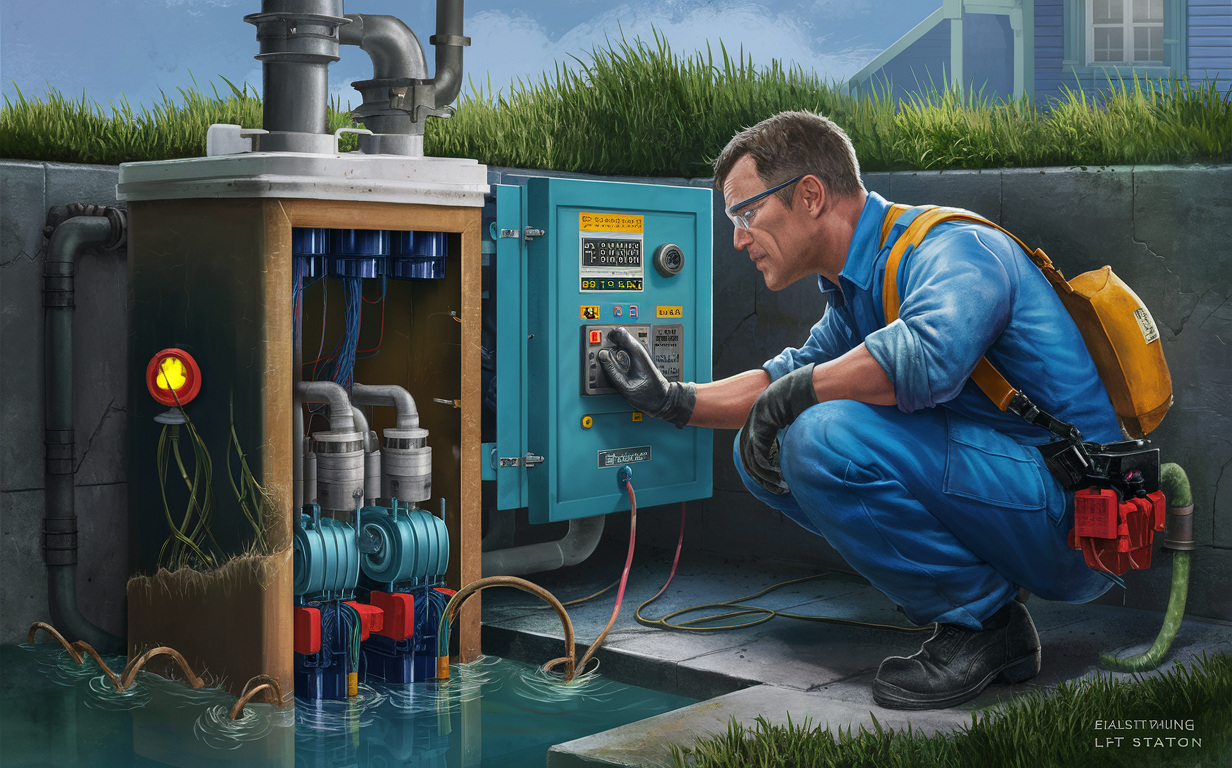
- Lift stations play a crucial role in septic systems by moving wastewater from lower to higher elevations.
- Identifying malfunctions early can prevent costly repairs and environmental hazards.
- Common malfunctions include pump failures, electrical issues, and float switch problems.
- Regular maintenance and inspections are vital for preventing and addressing lift station issues.
Understanding the Role of Lift Stations in Septic Systems
Lift stations are essential in septic systems, particularly in areas where the terrain does not allow for gravity flow of wastewater. They pump sewage from lower elevations to higher ones, ensuring that it reaches the treatment facility or main sewer line. Without them, wastewater could back up, leading to severe health and environmental problems.
Common Signs of Lift Station Malfunctions
Detecting malfunctions early can save you from expensive repairs and potential hazards. Here are some common signs that your lift station might be in trouble:
1. Sewage Backups
One of the most obvious signs of a malfunction is sewage backing up into your home or business. This can occur when the lift station fails to pump wastewater effectively.
2. Alarms and Alerts
Most modern lift stations are equipped with alarm systems that alert you to problems. If you hear an alarm, it’s a clear indication that something is wrong.
3. Pooling Water
Water pooling around the lift station or septic tank can indicate a malfunction. It may suggest that the pump is not working correctly, leading to overflow.
4. Unusual Noises
Strange noises such as grinding, hissing, or clanking coming from the lift station can be a sign of mechanical issues.
5. Constant Pump Running
If the pump is running continuously without shutting off, it could be a sign of a problem. This can lead to overheating and eventual pump failure.
6. Foul Odors
Foul odors around your property can indicate that wastewater is not being pumped away effectively.
Common Causes of Lift Station Malfunctions
Understanding what can go wrong with lift stations is the first step in preventing issues. Here are some common causes of malfunctions:
1. Pump Failures
Pumps can fail due to wear and tear, improper maintenance, or subpar quality. Regular inspections can help identify potential problems before they lead to failure.
2. Electrical Issues
Faulty wiring, blown fuses, and circuit breaker problems can all cause the lift station to stop working. Ensuring the electrical components are in good shape is crucial.
3. Float Switch Problems
The float switch controls the pump’s operation. If it gets stuck or fails, the pump might not turn on or off as needed, leading to overflows or dry runs.
4. Clogged Pipes
Debris, grease, and other materials can clog the pipes leading to and from the lift station, causing backups and pump strain.
5. Mechanical Wear
Components like seals, bearings, and impellers can wear out over time, leading to decreased efficiency and eventual failure.
Effective Solutions to Lift Station Issues
Knowing how to address lift station problems can save you time and money. Here are some effective solutions:
1. Regular Maintenance
Regular maintenance is key to preventing malfunctions. This includes inspecting the pump, checking electrical components, and cleaning the system.
2. Professional Inspections
Hiring professionals to inspect your lift station can help identify issues early. They have the expertise to spot problems that you might miss.
3. Upgrading Components
Upgrading to higher-quality pumps and electrical components can enhance the reliability of your lift station.
4. Installing Backup Systems
Installing backup pumps and power supplies can ensure your lift station operates even during power outages or primary pump failures.
5. Keeping Records
Maintaining detailed records of maintenance and inspections can help track the health of your lift station and predict when components might need replacement.
Lift Station Maintenance Best Practices
Proper maintenance can extend the life of your lift station and prevent malfunctions. Here are some best practices:
Routine Inspections
Conduct routine inspections to check for signs of wear and tear.
Cleaning
Regularly clean the lift station to remove debris and sediment that can clog the system.
Testing
Test the pump and float switch periodically to ensure they are working correctly.
Lubrication
Keep all moving parts properly lubricated to reduce wear and tear.
Electrical Checks
Ensure all electrical connections are secure and the components are functioning properly.
Common Lift Station Malfunctions and Solutions
| Malfunction | Sign | Potential Cause | Solution |
|---|---|---|---|
| Pump Failure | Sewage backups | Wear and tear | Regular inspections |
| Electrical Issues | Alarms, no power | Faulty wiring or fuses | Electrical component checks |
| Float Switch Problems | Constant running | Stuck or failed switch | Switch inspection and testing |
| Clogged Pipes | Pooling water | Debris or grease | Regular cleaning |
| Mechanical Wear | Unusual noises | Worn seals or bearings | Component replacement |
Lift Station Maintenance Checklist
| Maintenance Task | Frequency | Description |
|---|---|---|
| Inspect pump | Monthly | Check for wear and tear |
| Clean lift station | Quarterly | Remove debris and sediment |
| Test float switch | Monthly | Ensure proper operation |
| Lubricate moving parts | Annually | Reduce wear and tear |
| Check electrical components | Monthly | Ensure secure connections and functioning components |
| Backup system check | Biannually | Ensure backup systems are operational |
Importance of Professional Help
While some maintenance tasks can be performed by homeowners, many require professional expertise. Hiring a professional ensures that the job is done correctly and safely. Professionals have the tools and knowledge to handle complex issues and provide long-term solutions.
Preventive Measures for Homeowners
Homeowners can take several preventive measures to reduce the risk of lift station malfunctions:
1. Avoid Flushing Non-Biodegradable Items
Flushing items like wipes, diapers, and sanitary products can clog the system. Stick to flushing only biodegradable materials.
2. Dispose of Grease Properly
Pouring grease down the drain can lead to clogs. Dispose of grease in the trash instead.
3. Regularly Check for Signs of Problems
Keep an eye out for signs of lift station malfunctions and address them promptly.
4. Schedule Regular Professional Inspections
Even if everything seems fine, regular professional inspections can help catch issues before they become serious.
- According to the National Small Flow Cleansers Association (NSFCA), lift stations in septic systems fail due to various reasons, including power outages, pump failure, and float switch malfunctions (Source).
- The Environmental Protection Agency (EPA) reports that over 20% of the 15 million septic systems in the United States have failed or are in failure mode (Source). Malfunctioning lift stations are a significant contributor to this statistic.
- The National Association of Wastewater Technicians (NAWT) states that regular maintenance and inspections can help prevent lift station malfunctions (Source).
- The American Society of Civil Engineers (ASCE) estimates that the United States will spend $335 billion on water infrastructure by 2025, with a significant portion going towards septic system upgrades and repairs (Source).
Preventive Tips for Lift Station Maintenance
- Schedule regular professional inspections.
- Avoid flushing non-biodegradable items.
- Dispose of grease properly.
- Keep an eye out for signs of malfunctions.
- Test backup systems periodically.
Conclusion
Identifying lift station malfunctions early can save you from expensive repairs and potential health hazards. Regular maintenance, professional inspections, and preventive measures are key to keeping your lift station and septic system running smoothly. Septic & Sewer Lift Station Pumping
By understanding the common signs, causes, and solutions for lift station malfunctions, you can ensure the longevity and efficiency of your septic system. Don’t wait for a problem to arise—stay proactive and keep your system in top shape.
Need Help with Your Lift Station?
United Sewer & Septic offers expert septic and sewer services in Middletown, NY, and surrounding areas. With over 30 years of experience, our team is equipped to handle all your septic and sewer needs. Contact us today to schedule a service or request an estimate.
Phone: (888) 845-2564

